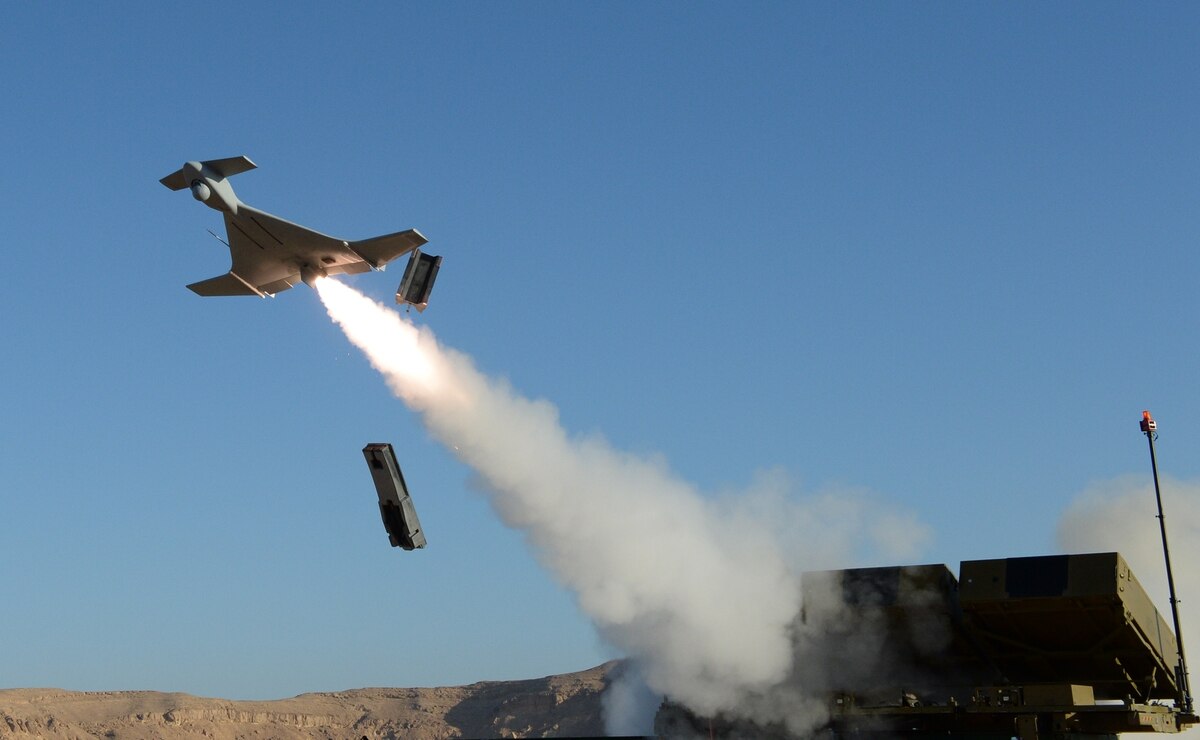Blog entry by Bruce McPherson

JERUSALEM — Israel Aerospace Industries on Monday announced more than $100 million in contracts for loitering munitions in three deals that include the Rotem VTOL and the Harop drones. The latter was sold in its land and naval versions.
In keeping with the usual policy in Israel, the company did not reveal its customers, only saying that a foreign country acquired Rotem, while the naval and ground versions of Harop were sold in Asia.
IAI said the contracts are proof of the importance that modern armies place in having accurate munitions, noting the deals may serve as a “harbinger of additional business activity.”
Loitering munitions are sometimes referred to as kamikaze drones because they can be used as a weapon by crashing into a target. These weapons can also hunt down enemy air defenses, among other critical targets.
The Harop maritime variant provides an operational solution for a range of vessels, IAI said. “In a complex naval theater, the Harop system gives mission commanders in a fleet of ships the capability to independently and organically collect intelligence, assess targets and strike,” the firm has said. It can also be used as an alternative to or complement sea-to-sea missiles, and is useful in both low- and high-intensity conflict as well as counterterror operations, according to the company. It is also equipped with day and night cameras.
The Harop is sometimes seen in sets of nine on land vehicles but can be configured to a different format for use at sea. The electro-optical assets of the Harop aid the man-in-the-loop operator and also provide for deep strike air superiority capabilities, IAI said.
The Rotem is a vertical-takeoff-and-landing drone used by several countries. “The system provides a reconnaissance, observation and attack envelope with maximum autonomous performance, integrating a simple and intuitive operation interface that can be used by a single fighter from a touchscreen tablet,” IAI said.
According to Yoel Guzansky, a senior fellow at the Institute for National Security Studies at Tel Aviv University, the recent Abraham Accords that saw relations improve between Israel and its neighbors, including the United Arab Emirates and Bahrain, has opened a niche in which Israel is more “kosher” to do deals with. That opens doors in the Gulf region and to Muslim countries globally, where Israeli sales would otherwise be viewed skeptically or be very sensitive.
Other events boosting sales, he noted, include tension with Iran and the Nagorno-Karabakh conflict, during which Azerbaijan used loitering munitions against Armenian forces.
Israel often doesn’t identify the countries to which it sells defense systems because it doesn’t want to appear to be part of conflicts, Guzansky explained. But “usually in reports when they don’t disclose, it can be an Arab or Muslim country or Singapore, so usual suspects could be Taiwan, Singapore, Philippines, etc.,” he added.
“Israel must be sensitive, to think hard at what kind of weapon systems and to whom [it is selling],” Guzansky said, as the government doesn’t want to become entangled in a conflict between rival countries or have its arms end up in the hands of those for which they were not intended.
Tal Inbar, an expert on defense and missile systems and a former chief of the Space Research Center at the Fisher Institute, also pointed to the recent Armenian-Azeri conflict as showcasing the use of loitering munitions. Amid the Abraham Accords, “I believe we will see [a] dramatic increase in [sales of] Israeli products.”
Three and a half decades of experience in producing UAVs has led IAI to this point. Its family of systems also include the Harpy, Mini Harpy and Green Dragon. The Harpy was developed with an anti-radiation seeker to suppress surface-to-air missile radar. IAI predicts a future where militaries will use multiple layers of unmanned and remotely operated systems.
The company sees the systems as appropriate for a variety of customers, from wealthy nations seeking high-tech weapons to those customers that require an affordable option to compensate for a lack of fifth-generation warplanes.